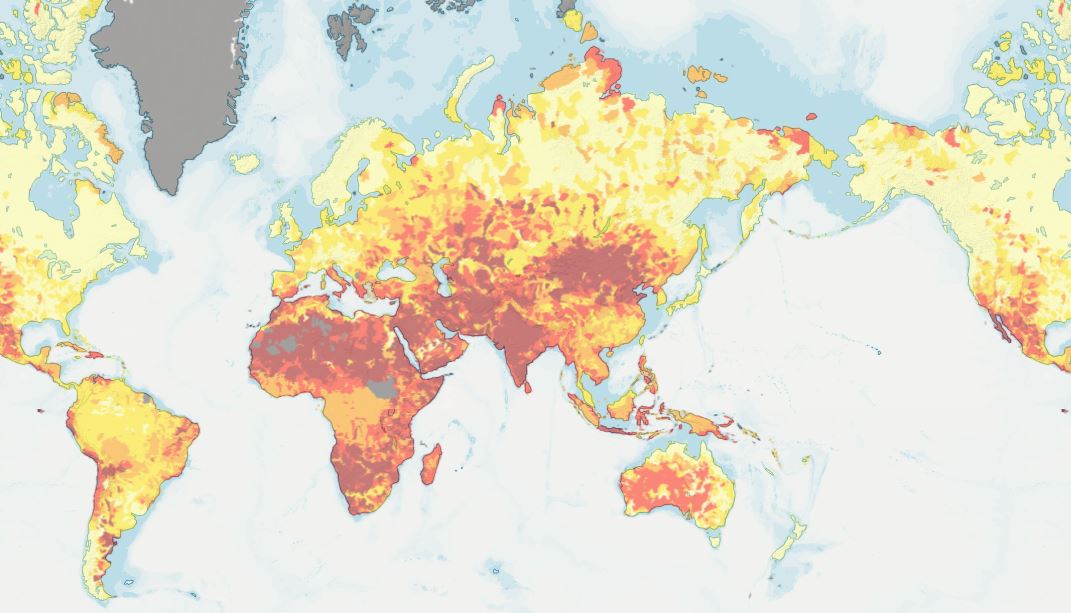
Textile production requires large amounts of water
Water consumption in all process steps
Water is required in almost all process steps of textile production:
- the cultivation of agricultural crops such as cotton
- the rearing of animals whose wool or feathers is used such as sheep and geese
- the production of synthetic fibers such as polyester
- in all washing, dyeing and finishing processes
The WWF assumes that the textile industry consumes 13.6 liters of water for every euro of turnover. 43% of this is accounted for by wet processes such as washing, dyeing and finishing of textiles.
High risk for global water scarcity
The World Resources Institute highlights the global risk of water scarcity. In the Water Risk Atlas (see graphic below), the extent of this threat becomes clear. The red areas in the 2019 chart show where there is a high to very high risk of water scarcity. What can be seen here is the baseline view which represents the current situation. It depicts water trends that are expected based on historical data. The tool does not display real-time data.

Water management in the supply chain
In a pilot project VAUDE has conducted an Environmental Stewardship training course with a number of its suppliers. As a result, more than 5,000 cubic meters of fresh water are saved in production every year. Read more here.
Most of our fabric suppliers work in accordance with the bluesign® system. For VAUDE, this is an important component of the entire environmental stewardship system.
Nevertheless, we often do not know the hard figures for our suppliers’ water consumption. One reason for this is that we are often only one of many of their customers. Another reason is that a uniform method for measuring the water consumption of an outdoor product is still lacking. Despite this difficult starting position, we are in the process of developing strategies and measures for improved water management in our supply chain.
Great potential for savings
For VAUDE, water management in the supply chain is a high priority issue for the coming years. That is why we launched the "Water Stewardship" project this year. I
This year with scientific support, we began to analyze our supply chain using the WWF Guide to Water Management and to determine the status quo in water consumption. The central question here was to find out where in our supply chain the most water is consumed - and, conversely, where the greatest potential for savings lies. The analysis showed that the highest water consumption takes place at our suppliers in the second upstream value chain stage, i.e. during material production, or more precisely in the dyeing processes. Most of these suppliers are located in Taiwan. If you want to know more, check out this link.
The next step will be to deepen and expand this initial analysis. For this purpose, we will participate with selected suppliers in the "Industrial Water Efficiency Improvement Project" of the Taiwanese government. The project is being carried out by the Industrial Technology Research Institute (ITRI) in Taiwan and includes on-site audits of suppliers for the exact recording of water consumption, inspections and audits of production sites and processes, and an action plan based on this with potential savings, targets and measures for each individual supplier. There will be more on this in our next sustainability report.
In addition to a focus on the careful use of water in production, we are also working with our suppliers to process more and more substances that have been produced using particularly water-saving technologies. This includes more eco-friendly dyeing technologies: For example, modern dyeing machines save up to 30 % water and 70 % chemicals compared to older designs.
| GRI: | 3-3 |
| GRI: | 303-1 |
| GRI: | 303-2 |
| GRI: | 303-3 |




